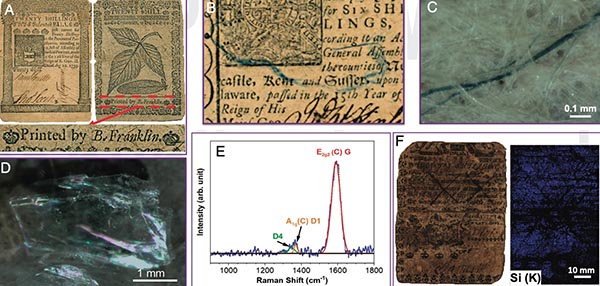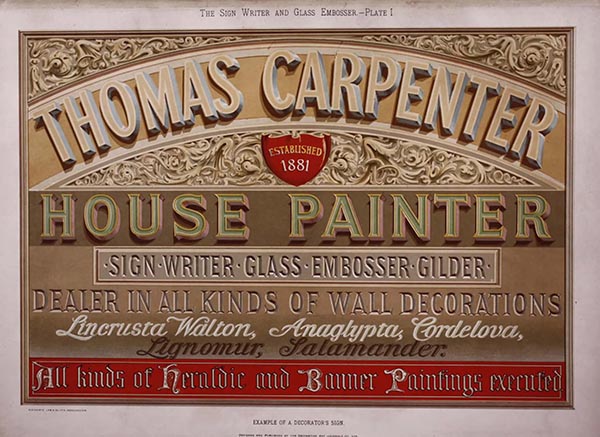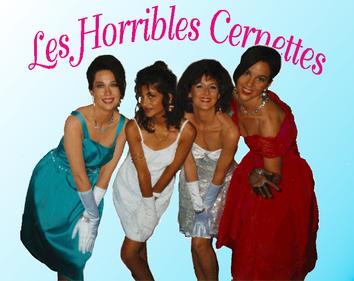What the Helvetica?
Most of us don’t pay too close attention to the default font in Microsoft Office Microsoft 365, but if you have become wedded to Calibri, prepare for a divorce, as, via Ars Technica, Microsoft has announced that it has selected a new default typeface for Word, Excel, PowerPoint, Outlook, etc.
“Calibri has been the default font for all things Microsoft since 2007, when it stepped in to replace Times New Roman across Microsoft Office,” the Microsoft Design Team opined in Calibri’s de facto obit. “It has served us all well, but we believe it's time to evolve.”
Into what? dare we ask. Aptos.
Aptos was created by Steve Matteson, who is also responsible for Windows 3.1’s original TrueType fonts (including Times New Roman, Arial, and Courier New) as well as Segoe, which has been Windows' default system font since Vista and is also used for Microsoft’s current logo. Given Matteson’s history with Microsoft, choosing Aptos over the others feels like the safest possible choice.

It is described as “Helvetica, but with a human touch.” What, was Helvetica designed by AI?
Aptos is described as a font with "warmth" that is "professional and yet relatable." Relative to Arial, it is also "more mechanical and rationalized" with "a lack of somewhat fussy curves." Matteson says he drew the initial shapes by hand on paper rather than on a computer so that they wouldn't become too "ephemeral." The post also highlights that a lowercase l and an uppercase I are made to look different, something you'll understand the importance of if you read this sentence again.
These days, we understand the need to easily differentiate between a lowercase “l” and an uppercase “I,” although the phrase “Weird AI” could go either way.
All About the Benjamin
A common anti-counterfeiting technique has long been to weave tiny colored fibers into paper currency. The process was believed to have been the brainchild of Zenas Marshall Crane, a Massachusetts papermaker who began it in 1844. However, via Ars Technica, scientists at the University of Notre Dame have found that the process was being implemented much earlier—and by none other than Benjamin Franklin.
The first paper money appeared in 1690 when the Massachusetts Bay Colony printed paper currency to pay soldiers to fight campaigns against the French in Canada. The other colonies soon followed suit, although there was no uniform system of value for any of the currency. To combat the inevitable counterfeiters, government printers sometimes made indentations in the cut of the bill, which would be matched to government records to redeem the bills for coins. But this method wasn't ideal since paper currency was prone to damage.
…Franklin was a strong advocate of paper currency from the start. For instance, in 1736, he printed a new currency for New Jersey, a service he also provided for Pennsylvania and Delaware. And he designed the first currency of the Continental Congress in 1775, depicting 13 colonies as linked rings forming a circle, within which "We are one" was inscribed. (The reverse inscription read, "Mind your business," because Franklin had a bit of cheek.)
As expected, it wasn’t long before counterfeiting became a thing, and Franklin et al. found themselves at war with the producers of funny money, devising new and better methods to help distinguish real from fake bills. (In 1739 in Pennsylvania, Franklin’s printed currency deliberately misspelled the state's name, thinking that counterfeiters would be inclined to correct the misspellings.) Franklin kept a record of his anticounterfeiting techniques, but alas that record has been lost. So, to get an idea of what Franklin did:
The Notre Dame researchers applied a broad range of advanced physics-based instruments and techniques to analyze the structure and composition of the inks, fibers, paper, and fillers Franklin's network used to make more than 600 bills between 1709 and 1790; they also analyzed other 18th-century currency and known counterfeits. The samples came from the Rare Books and Special Collections of the university's Hesburgh Library. Those methods included Raman spectrometers, transmission electron microscopes (TEM), a 3MV tandem accelerator, handheld X-ray fluorescence (XRF) scanners, micro-XRF scanners, and X-ray diffractometers, among others.
Among other things, Franklin made his own inks and also started adding a hard-to-copy watermark.
Later on, Franklin started introducing slivers of muscovite, or mica (potassium aluminum), into the paper he used to print money, apparently taken from a mound behind his house. That mica had a unique composition, electron microscopy revealed, which would have been extremely difficult for forgers to copy since they didn't have access to his personal pile of ore. And Manukyan et al. found that the size of the muscovite crystals in Franklin's paper increased over time.
Recently, however, they discovered he used other paper-based anti-counterfeiting techniques.
The most recent discovery: very thin (between 100–300 microns) indigo-colored blue fibers and threads, found in Franklin’s printed currency as early as 1739. Later bills that Franklin printed in the 1770s incorporated much larger threads and microfibers, measuring up to a few centimeters in length. Those blue fibers were not found in either the non-Franklin currency or the known counterfeits. “These [colored fiber] techniques have been used later on in printing federal dollars, and then other currencies all over the world,” Manukyan told New Scientist.

“General characteristics of paper money printed by Franklin and his network. (C) shows blue threads and fibers on a six-shilling Delaware note printed in January 1776.”
Old Clothes
They say “if it ain’t broke, don’t fix it,” but really… Yesterday, our textiles expert Debbie McKeegan explained how digital production is transforming—and will need to further transform—the textile industry. However, someone needs to tell Japan’s Miyata Textile Co. Via Boing Boing, the company has been making fabric for about a hundred years—and since the 1980s, they’ve been using the same software. Yep, the 40-year-old software is still stored on magnetic tape.
The software uses punch cards, which are kind of like the 1980s version of a USB stick. These cards store information about different weaving patterns. The software takes the details from the punch cards and visualizes the design, from each individual thread to the whole piece of fabric.
(Computer—and/or textiles—historians are well aware that the original Jacquard loom, patented in 1804, marked the first time that punch cards were used to automate textile production.)
The Miyata Textile Co. uses its ancient but still effective software to create items of clothing like the Hanten, a traditional winter jacket that the Japanese have been wearing since the Edo period.
But, hey, who doesn’t often keep an ancient computer around to run legacy software? That isn’t weird…is it?
We presume the company has the software backed up in some way.
Supercalendar
Do you still use/prefer a wall calendar? Do you wish it would sync with your electronic calendar? If so, good news! The E-Paper Smart Display is a wall-mounted E Ink-based calendar that syncs with Google Calendar. This is really cool:

And meeting alerts will pop up on the screen (unless you were hoping to avoid them). The screen size is 7.5 inches and the resolution is 800 x 480 pixels. It comes with USB cable and a power cord. There is also a matching wooden stand so it can be placed on a desktop (or a nightstand if you never want to get any peace). A steal at $149.
Sign Language
Anyone involved in signmaking knows that creating effective signs is both an art and a science, and while today’s tools make sign creation a lot easier than it used to be, the same design rules apply. Steven Heller at Print magazine looks at some examples from the original English edition of The Sign Writer and Glass Embosser by W. & W. G. Sutherland, an 1895 “bible” of signage typography.
This thick volume is a veritable encyclopedia of design applications that the skilled letterer would have been called upon to create. The authors set the stage in “What a Sign Should Be,” stating: “Sign Boards, having become a necessity for the due and efficient carrying on of our businesses, we may (passing on to the strictly technical part of the subject) profitably send a short time and appropriate a small share of our space to the consideration of what a write sign ought to be, and what it ought not to be.”

Judging from some of the signs we see regularly, this book is still needed more than ever.
The Leftovers
For some of us, “food archaeology” is what happens when we clean out the refrigerator after an extended period of time, leading to such questions as “How long does apple sauce last?” “What kind of meat would you say this is/was?” and “Didn’t Lucky Dragon close five years ago?”
However, a new exhibit at Philadelphia’s Penn Museum comprises food artifacts older than the take-out container of lo mein nestled in the back of the fridge. Says Atlas Obscura:
But with its new Ancient Food & Flavor exhibit, the Penn Museum’s thousand-year-old llama jerky and apples older than Stonehenge are getting their turn in the spotlight. The exhibit focuses on culinary artifacts from three sites: Robenhausen, a 6,000-year-old village in Switzerland; Numayra, a 4,500-year-old community in Jordan; and Pachacámac, an 1,800-year-old city in Peru.
There is actually a method to the madness.
All the artifacts—which range from freeze-dried potatoes and grinding stones to fish scales and livestock dung—offer clues about ancient diets and lifestyles. Moore, who co-curated the exhibit, points to an animated video that imagines a robust trade hub in Pachacámac, one of three videos playing throughout the exhibit (the others depict a farm at Robenhausen and winemaking at Numayra). A comprehensive portrait like this, she says, is the result of years spent analyzing the small pieces of information offered by these specimens.

“Diets at Pachacámac included peanuts (foreground), as well as the sweet pods of the pakai plant (aka the ice cream plant), corn, and lúcuma fruits.” (Eric Sucar/University of Pennsylvania.)
Buy tickets for Ancient Food and Flavor here—but be sure you don’t forget about them.
Graphene Gets in Hot Water
Was it a good week for graphene news? It’s always a good week for graphene news! Graphene ink-based hot water heaters. From (who else?) Graphene-Info:
During stage one, Haydale said it identified four specific and detailed user case scenarios where their graphene ink-based heaters could be effectively used across Cadent’s network. That initial stage helped lay the foundation for subsequent development work, with building on the findings - stage two of the project - focused on creating an operational pre-product prototype. The prototype showcased Haydale’s functionalized graphene ink, which is printed onto flexible heater sheets which were then enclosed within an insulated 3D printed portable unit.
The idea is to develop a low-power water heating solution that can be employed during gas supply interruptions to the gas supply, particularly for vulnerable customers such as the elderly or disabled. Pretty cool…or not.
Amish Paradise
There are times when we truly envy the Amish their simple, technology-free lifestyle. As it happens, however, forgoing any and all technology is not actually what the Amish are all about, and individual communities are allowed to selectively pick what forms of technology are allowed. Via The Cooldown, the official tourism site for Lancaster, Pa.—site of many Amish communities—explains it:
When a new technology comes along, its effect on the church and community is examined. The technology should not be an intrusion into the home, but rather serve the social purposes and goals of the group. With that in mind, the Amish often re-purpose the technology, in a sense, to align with their community beliefs.
And, as it happens, some Amish communities have really taken to electric bikes.
In the case of e-bikes, several churches have now decided that the benefits outweigh the costs. “It’s a lot quicker to jump on your bike and go into town than it is to bring your horse into the barn, harness it to the buggy, and go,” David Mullett, a member of the Old Order Amish Church and owner of an e-bike shop in Ohio, told the blog This E-Bike Life.
However, they do need to be charged—and doesn’t that make them reliant on the power grid?
Generally speaking, Amish communities are most likely to avoid a new technology if they believe that it will make them too reliant on the outside world. This has also led some of them to make use of electricity derived from solar panels, which they can own and maintain. The e-bikes, as well, can often be charged by small solar panels.
Who’d have thought the Amish were ahead of the transportation curve?
Running Hammock
It’s summer, and that can only mean one thing: hammocks, especially if you are one of those people who can gracefully get in and out of a hammock without becoming an Internet meme. Even so, a comfortable hammock usually requires finding two properly spaced trees or mucking about with bulky frames. However, via Core77, a recent crowdfunding smash is Anymaka’s “fast-deploying” portable hammock.

Supposedly, the Anymaka frame sets up or breaks down in three seconds. A shortcoming, as it were, is that it’s not as long as a regular hammock, so if you are Ted Cassidy you may not find it as comfy as someone more diminutive. Still:
The Anymaka hammock has been an absolute smash on Kickstarter, seeking just $10,000 in pledges and garnering $887,474 at press time, with 44 days left to pledge. The $245 product is surely on track to hit the million-dollar mark.
It’s a Scream
Movie buffs may be familiar with the “Wilhelm scream,” a classic stock sound effect that has been featured in hundreds of movies from Raiders of the Lost Ark to Star Wars to Toy Story. Defines Boing Boing:
The Wilhelm Scream first hit the silver screen in the 1951 film Distant Drums, and later got its moniker from the 1953 film The Charge at Feather River, where a character named Private Wilhelm delivers the distinctive yell. In an era when crafting new sound effects wasn't cheap, the industry decided to recycle the Wilhelm Scream, leading to its ongoing presence in films.
Ben Burtt, sound designer for the original Star Wars, revived the Wilhelm scream for Star Wars and ever since it has been used as a kind of auditory Easter egg.
Craig Smith, a researcher from Cal Arts, stumbled upon the source of the infamous scream while rummaging through a collection of discarded tapes from USC's Film School, unknowingly finding a piece of Hollywood's history.
https://www.cbsnews.com/losangeles/video/hollywoods-wilhelm-scream-has-a-life-of-its-own/
Here’s a piece of trivia: whose voice was used for the Wilhelm scream? Sheb Wooley, best known perhaps for singing the 1958 novelty song “The Purple People Eater.”
Bombs Away
Today, two new movies are opening, which—we assume—could not be different from each other: Oppenheimer, about the “father” of the atomic bomb, and Barbie, a live-action movie featuring the doll. Because time is limited (and Oppenheimer is 3+ hours long, while Barbie will only feel that long we suspect), we say combine the two, as Sean Longmore has done:

Ding Dong
You know how it is: you’re in the mood for a snack cake, but you’re stuck in the classic dilemma: Twinkie or Ding Dong? Well, now, thanks to Hostess, you don’t have to choose. Says Food & Wine:
Ding Dongs x Twinkies Mashups are exactly what they sound like — a combination of some of the most recognizable parts of those iconic cakes. According to Hostess, the Mashups "feature the moist, spongy cake and creamy filling Twinkies fans know and love enrobed in the rich, fudgy chocolate frosting of Ding Dongs."
However, buyer beware:
While the familiar yellow spongecake comprises the inside layer (surrounding the usual creamy filling core), these treats are not, in fact, Twinkie-shaped.
ZOMG!!! Noooo!!!!!

Surely they could have come up with a more clever name (but don’t call them Shirley).
The new Ding Dongs x Twinkies Mashups are rolling out at Walmart stores nationwide this month in packs of ten individually-wrapped cakes.
And it looks like they are going to be a permanent addition to Hostess’ lineup. Consider yourselves warned.
This Week in Printing, Publishing, and Media History
July 17
1717: King George I of Great Britain sails down the River Thames with a barge of 50 musicians, where George Frideric Handel’s Water Music is premiered.
1889: American lawyer, author, and creator of Perry Mason Erle Stanley Gardner born.
1902: Willis Carrier creates the first air conditioner in Buffalo, N.Y.
1954: American author, screenwriter, and producer J. Michael Straczynski born.
1955: Disneyland is dedicated and opened by Walt Disney in Anaheim, Calif.
2001: American publisher Katharine Graham dies (b. 1917).
2006: American crime novelist Mickey Spillane dies (b. 1918).
July 18
1811: English author and poet William Makepeace Thackeray born.
1817: English novelist Jane Austen dies (b. 1775).
1906: American director, playwright, and screenwriter Clifford Odets born.
1937: American journalist and author Hunter S. Thompson born.
1968: Intel is founded in Mountain View, Calif.
1992: A picture of Les Horribles Cernettes was taken, which became the first ever photo posted to the World Wide Web.

July 19
1834: French painter, sculptor, and illustrator Edgar Degas born.
1868: American “singer” and educator Florence Foster Jenkins born.
1947: English singer-songwriter and guitarist (Queen) and astrophysicist Brian May born.
1977: The world’s first Global Positioning System (GPS) signal was transmitted from Navigation Technology Satellite 2 (NTS-2) and received at Rockwell Collins in Cedar Rapids, Iowa, at 12:41 a.m. Eastern time (ET).
1983: The first three-dimensional reconstruction of a human head in a CT is published.
July 20
1822: Give peas a chance—Austro-German monk, geneticist and botanist Gregor Mendel born.
1903: The Ford Motor Company ships its first automobile.
1938:– The United States Department of Justice files suit in New York City against the motion picture industry charging violations of the Sherman Antitrust Act in regards to the studio system. The case would eventually result in a break-up of the industry in 1948.
1969: Apollo 11’s crew successfully makes the first manned landing on the Moon in the Sea of Tranquility. Americans Neil Armstrong and Buzz Aldrin become the first humans to walk on the Moon six and a half hours later.
July 21
1816: German-English journalist and founder of Reuters Paul Reuter born.
1899: Ernest Hemingway born.
1911: Marshall McLuhan, Canadian author and theorist, born.
1948: Doonesbury creator Garry Trudeau born.
1969: At 02:56 UTC, astronaut Neil Armstrong becomes the first person to walk on the Moon.
2015: American novelist, short story writer, and playwright E. L. Doctorow dies (b. 1931).
July 22
1598: William Shakespeare’s play The Merchant of Venice is entered on the Stationers’ Register. By decree of Queen Elizabeth, the Stationers’ Register licensed printed works, giving the Crown tight control over all published material.
1893: Katharine Lee Bates writes "America the Beautiful" after admiring the view from the top of Pikes Peak near Colorado Springs, Colo.
1898: American poet, short story writer, and novelist Stephen Vincent Benét born.
1932: American novelist Tom Robbins born.
1967: American poet and historian Carl Sandburg dies (b. 1878).
July 23
1829: In the United States, William Austin Burt patents the typographer, a precursor to the typewriter.
1888: American crime novelist and screenwriter Raymond Chandler born.
1903: The Ford Motor Company sells its first car.
1957: English comedian, actress, and screenwriter Jo Brand born.
1962: Telstar relays the first publicly transmitted, live trans-Atlantic television program, featuring Walter Cronkite.










Discussion
Join the discussion Sign In or Become a Member, doing so is simple and free